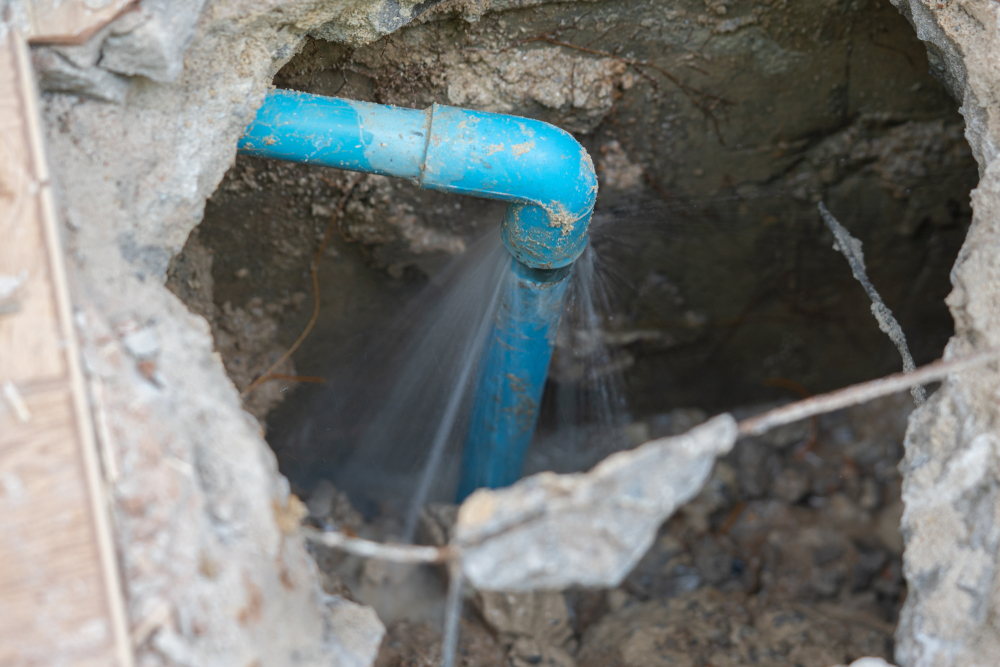Were you trying to locate advice around Hacks to detect leaks?

Early discovery of dripping water lines can alleviate a possible calamity. Some tiny water leaks may not be noticeable.
1. Examine the Water Meter
Every home has a water meter. Inspecting it is a surefire manner in which helps you uncover leaks. For beginners, turn off all the water resources. Ensure no one will purge, utilize the tap, shower, run the washing maker or dish washer. From there, most likely to the meter as well as watch if it will transform. Given that no one is using it, there need to be no activities. If it relocates, that indicates a fast-moving leakage. Likewise, if you detect no changes, wait a hr or 2 and inspect back once more. This means you might have a sluggish leak that can even be underground.
2. Inspect Water Usage
Analyze your water costs and track your water intake. As the one paying it, you need to see if there are any kind of discrepancies. If you detect sudden changes, regardless of your intake coinciding, it suggests that you have leaks in your plumbing system. Remember, your water expense must drop under the very same variety on a monthly basis. A sudden spike in your bill indicates a fast-moving leakage.
At the same time, a stable rise each month, despite having the same behaviors, shows you have a sluggish leakage that's also slowly intensifying. Call a plumber to extensively examine your building, particularly if you really feel a cozy location on your floor with piping below.
3. Do a Food Coloring Examination
30% comes from bathrooms when it comes to water usage. Examination to see if they are running effectively. Decline specks of food color in the container as well as wait 10 minutes. There's a leakage between the tank as well as dish if the color somehow infiltrates your bowl throughout that time without flushing.
4. Asses Exterior Lines
Don't neglect to inspect your exterior water lines as well. Must water permeate out of the link, you have a loosened rubber gasket. One little leak can throw away bunches of water and surge your water expense.
5. Examine the scenario and also inspect
Homeowners should make it a practice to inspect under the sink counters and also even inside cupboards for any bad odor or mold development. These 2 red flags suggest a leakage so punctual attention is called for. Doing routine examinations, also bi-annually, can conserve you from a significant issue.
Check for stainings as well as damaging as most devices as well as pipelines have a life expectations. If you think dripping water lines in your plumbing system, do not wait for it to escalate.
Early discovery of dripping water lines can mitigate a prospective disaster. Some small water leaks may not be visible. Inspecting it is a proven means that assists you find leakages. One little leak can lose bunches of water and also surge your water bill.
If you suspect dripping water lines in your plumbing system, do not wait for it to rise.
WARNING SIGNS OF WATER LEAKAGE BEHIND THE WALL
PERSISTENT MUSTY ODORS
As water slowly drips from a leaky pipe inside the wall, flooring and sheetrock stay damp and develop an odor similar to wet cardboard. It generates a musty smell that can help you find hidden leaks.
MOLD IN UNUSUAL AREAS
Mold usually grows in wet areas like kitchens, baths and laundry rooms. If you spot the stuff on walls or baseboards in other rooms of the house, it’s a good indicator of undetected water leaks.
STAINS THAT GROW
When mold thrives around a leaky pipe, it sometimes takes hold on the inside surface of the affected wall. A growing stain on otherwise clean sheetrock is often your sign of a hidden plumbing problem.
PEELING OR BUBBLING WALLPAPER / PAINT
This clue is easy to miss in rooms that don’t get much use. When you see wallpaper separating along seams or paint bubbling or flaking off the wall, blame sheetrock that stays wet because of an undetected leak.
BUCKLED CEILINGS AND STAINED FLOORS
If ceilings or floors in bathrooms, kitchens or laundry areas develop structural problems, don’t rule out constant damp inside the walls. Wet sheetrock can affect adjacent framing, flooring and ceilings.
https://www.servicemasterbyzaba.com/blog/how-to-detect-water-leakage-in-walls/

Do you like reading about Hacks to detect leaks? Post feedback below. We'd be glad to hear your insights about this content. Hoping to see you back again before long. In case you enjoyed reading our blog entry kindly remember to share it. We truly appreciate reading our article about Top leak detection hacks.